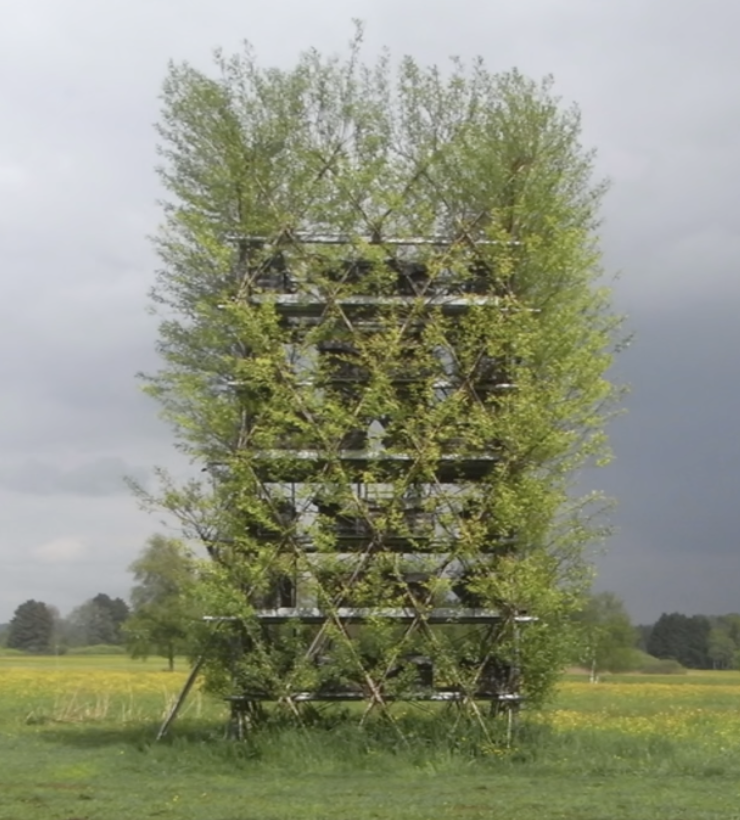Architects Ferdinand Ludwig and Daniel Schönle would like to revolutionize the way we build, or more appropriately “grow”, our buildings. Inspired by the ancient art of tree shaping - from Japanese Bonsai to India’s Living Tree Bridges - they have added modern materials, like metal scaffolding, to graft a 10-meter-high (33 feet) living tower near Germany’s Black Forest. The Plane-Tree-Cube Nagold is their largest living plant structure yet though Ludwig has spent years experimenting with “baubotanik” (bau= building + “botanik” = botany) techniques, inspired by historical examples. Ludwig’s first biodesigned structure was the Baubotanik Footbridge planted in 2005 as an initial attempt to get people into the canopy of the trees. Biodesign relies on processes that occur in nature, such as inosculation: a grafting process where the limbs of separate trees grow together, shedding bark and outer layers so the inner tissue and vasculature combine to create one organism. Another technique inspired by the events in the natural world is “uberballung” where a limb “grows over” another element, normally a metal beam or rod. Baubotanik constructions evolve over time. As the trees grow together they become strong enough to be load-bearing and more and more of the metal infrastructure can be removed. Over time, the buildings become more tree and more alive. Ludwig believes his Baubotanik methods can scale to buildings as high as a tree can grow (about 30 meters or 100 feet). “We made some design proposals even for whole streets where all the street trees are fused with the building in this way,” explains Ludwig. “So the people don’t live in a house, they live in a tree. For sure there are some rooms behind there that are traditional in a way, but if you go out of the door you stand in the tree, in the canopy.” Baubotanik: https://www.baubotanik.org/en/
City in Sky Bamboo Structures
City in Sky by Mu Wei + Sam Cho + Yu Hui
Nearly 40 young students who participated in a three month building project in Wuhan, China had a chance to experiment with living bamboo as a vital construction material. Led by architects Mu Wei, Sam Cho and Yu Hui for Natur Organic Life, the 'City in Sky' workshop was designed to steer the architectural conversation away from concrete and steel, and back towards a more organic approach that dominated Asian architecture for eons.
Nearly 40 young students who participated in a three month building project in Wuhan, China had a chance to experiment with living bamboo as a vital construction material. Led by architects Mu Wei, Sam Cho and Yu Hui for Natur Organic Life, the 'City in Sky' workshop was designed to steer the architectural conversation away from concrete and steel, and back towards a more organic approach that dominated Asian architecture for eons.
Nearly 40 students participated in a three month building workshop in China
The workshop organizers sought to remedy a rigorous and rote educational model deprives many Chinese children of a hands-on relationship with the natural environment, and their parents were able to attend as well. Although the architects were on hand to guide the process, the workshop participants were involved with sketching, modeling and construction.
Via Arch Daily - Images via Li Xiao & Jiang Jiang











